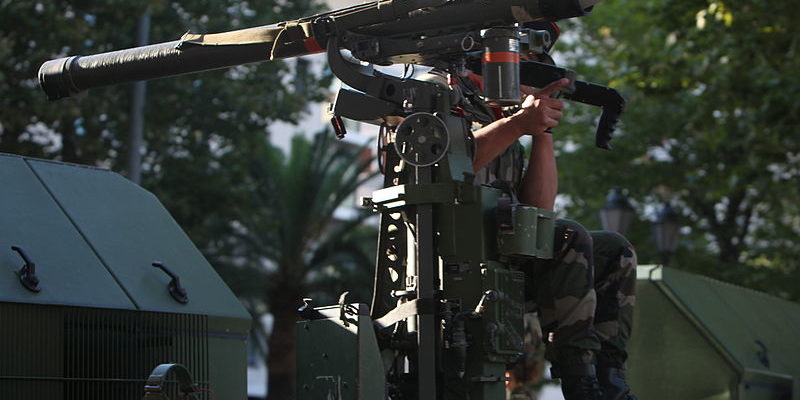Quick Facts
| Variants |
Mistral-2 ALAMO ALBI ATLAS SANTAL ATAM SADRAL SIMBAD TETRAL PMMC Aspic |
| Role and Mobility | Short-Range Surface-to-Air Defense; Man-Portable |
| Interceptors and Range |
High Explosive Warhead with High Density Tungsten Balls Range: 6 km |
| Sensors |
Fully Autonomous Infrared Homing Seeker Optical Sighting Device |
| Targets | Supersonic Aircraft |
| Status/Exports | Operational; Austria, Botswana, Brazil, Brunei, Chile, Cyprus, Colombia, Ecuador, Estonia, Finland, Hungary, Indonesia, Iran, Israel, Kenya, Lebanon, Morocco, Norway, New Zealand, Oman, Pakistan, Philippines, Rwanda, Singapore, South Korea, Spain, Thailand, and Venezuela |
| Designer/Producer | MBDA Missile Systems |
Overview
The Mistral Missile System that South Korea operates is a man-portable short-range surface-to air-missile system, capable of being launched from a variety of vehicles. The interceptors track their targets using infrared seekers. The Mistral’s seeker has a narrow field of view to focus on the prime target and reject decoys or interference. There are several variations of the Mistral missile and missile system mount:[i]
Mistral: The original missile and man portable system.
Mistral-2: An improved missile, with extended range and improved maneuverability. It is fully digital and can intercept helicopters with reduced infrared signatures.
ALAMO: A Mistral missile mount for light vehicles.
ALBI: A Mistral mount with two missiles, used on wheeled or lightly armored vehicles.
ATLAS: An improved ground-based mount with two Mistral missiles.
SANTAL: A turret mount for armored vehicles, equipped with six Mistral missiles.
ATAM: An air-to-air version of the Mistral, intended to be equipped on helicopters and aircraft.
SADRAL: An automated naval mount with six Mistral missiles.
SIMBAD: A pedestal naval mount with two Mistral missiles used on ships. There is also a remote-controlled version called the SIMBAD-RC.
TETRAL: A remote controlled naval mount with four Mistral-2 missiles, and a thermal camera for 24-hour capability.
PMMC: A Mistral MANPADS or ATLAS mount with added radar and fire control system.
Aspic: A pedestal mount with four Mistral-2 missiles, designed for wheeled or tracked vehicles.
Strategic Implications
The Mistral is a reliable and effective missile system, with a proven success rate of 93%.[ii] It can be operated from a variety of launch vehicles, making the Mistral a versatile weapon which can be effective in a range of situations. This is a beneficial trait in today’s high-paced geopolitical realm, which requires a flexible response capability.
Timeline
2000: Production of Mistral-2 missiles begin[iii]
1997: South Korea orders 1,000 missiles[iv]
1988: Mistral enters service[v]
1974: Development of the Mistral began
Recent News
References
[i] http://www.military-today.com/missiles/mistral.htm
[ii] https://www.army-technology.com/projects/mistral-missile/
[iii] http://www.military-today.com/missiles/mistral.htm
[iv] http://aviationweek.com/awin/south-korea-picks-mistral-air-defense-missile

